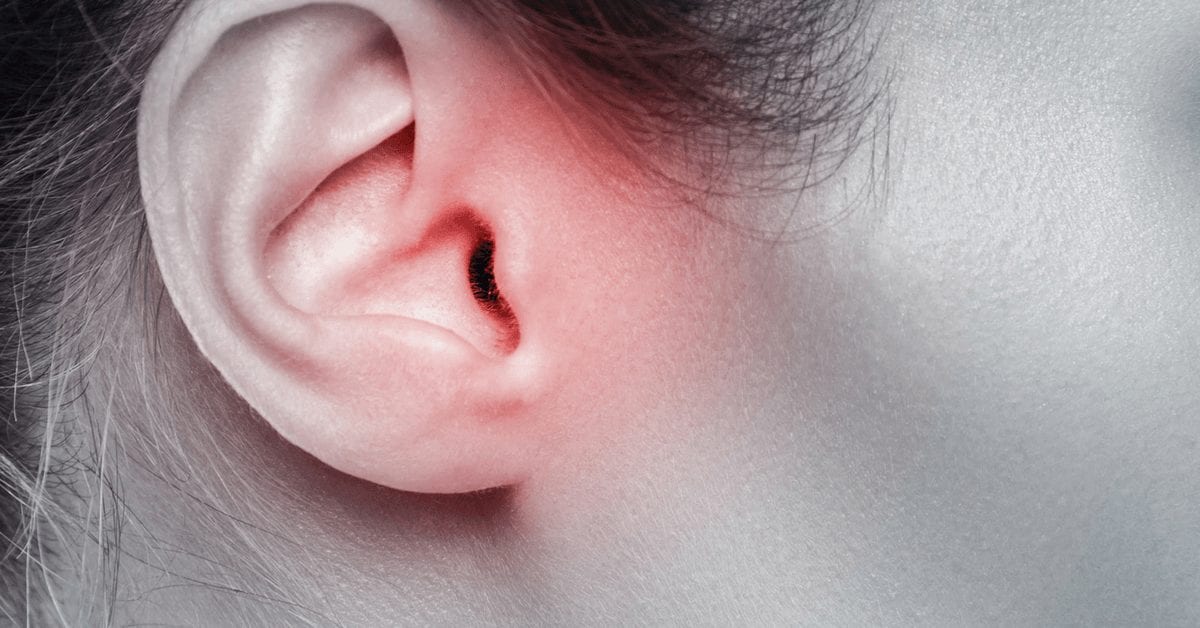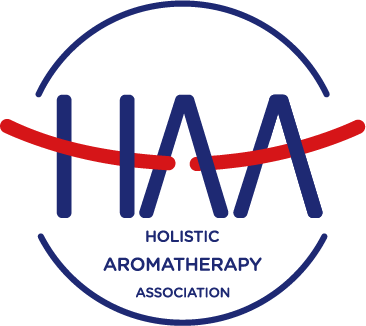EFFECTIVE TREATMENT OF EXPERIMENTAL ACUTE OTITIS MEDIA BY APPLICATION OF VOLATILE FLUIDS INTO THE EAR CANAL

Abstract
Essential oils are volatile and can have good antimicrobial activity. We compared the effects of oil of basil (Ocimum basilicum) and essential oil components (thymol, carvacrol, and salicylaldehyde) to those of a placebo when placed in the ear canal of rats with experimental acute otitis media caused by pneumococci or Haemophilus influenzae. Progress was monitored by otomicroscopic examination and middle ear cultures. The treatment with oil of basil or essential oil components cured or healed 56%–81% of rats infected with H. influenzae and 6%–75% of rats infected with pneumococci, compared with 5.6%–6% of rats in the placebo group. Essential oils or their components placed in the ear canal can provide effective treatment of acute otitis media.
Acute otitis media is one of the most common childhood infections and is the leading indication for prescription of antimicrobials in children. The main pathogens in this disease are Streptococcus pneumoniae and Haemophilus influenzae and antimicrobial resistance in these bacteria has become widespread and highly prevalent in some areas. This has led to problems in the treatment for diseases caused by these pathogens, and treatment failures have become more frequent. National campaigns to reduce unnecessary antimicrobial use stress that antimicrobials are often not needed for the treatment of uncomplicated acute otitis media. An alternative treatment that does not require the systematic administration of antimicrobials would offer a significant advantage over existing treatment options.
Numerous essential oils, including oil of basil (Ocimum basilicum) can have antimicrobial activity, and a recent study clearly demonstrates the rapid bactericidal effect that the vapors from these oils have. Because the tympanic membrane is not considered to be permeable to antimicrobial agents in liquid form, treatment of acute otitis media through the external ear canal is not advised. However, the vapors of essential oils may potentially diffuse from the external ear canal into the middle ear in quantities that are sufficient to produce an antimicrobial effect on acute otitis media. Our aim was to evaluate the effect that introduction of oil of basil or synthetic antimicrobial constituents of essential oils into the external ear canal has on rats with experimental acute otitis media.
Materials and methods
We selected 2 pneumococcal isolates (type 3 and 6B) and 1 H. influenzae isolate (noncapsulate) that had consistently caused acute otitis media in previous experiments. Pneumococci were inoculated into Todd Hewitt broth (Oxoid), and H. influenzae was inoculated into heart infusion broth (Becton Dickinson) with Fildes supplement (BBL). Both solutions were incubated until the broths became slightly turbid (3–6 h). The bacteria were harvested by centrifugation and were resuspended in fresh broth to an optical density corresponding to a concentration (confirmed with viable counts) of either 1 × 106–1 × 107 cfu/mL (for the pneumococci) or 1×108 cfu/mL (for H. influenzae). The suspensions were kept refrigerated at 4°C until use.
Ocimum basilicum (Basil Sweet essential oil; Aqua Oleum) was used in all experiments with oil of basil, and 100% pure olive oil (Filippo Berio) was used as a placebo in rats in the control group. The double mixture of essential oil components contained 4 g of thymol, 4 g of carvacrol (both from Sigma-Aldrich Chemie GmbH), and 92 g of ethanol (96% solution). The triple mixture of essential oil components contained 4 g of thymol, 4 g of carvacrol, 2 g of salicylaldehyde (Sigma-Aldrich Chemie GmbH), and 90 g of ethanol (96% solution)
Healthy, male Sprague-Dawley rats weighing 250–300 g were used. After otomicroscopic examination of both ears to confirm a normal appearance, the animals were anesthetized with an intraperitoneal injection of chloral hydrate. Through a ventral midline incision in the neck, the right tympanic bulla was exposed. Approximately 0.05 mL of bacterial suspension was inoculated with a fine needle through the bony wall of the bulla as described elsewhere. Otomicroscopic examination was performed postoperatively to confirm that the fluid was placed into the middle ear.
Diagnosis of acute otitis media required direct otomicroscopic visualization of purulent fluid behind the tympanic membrane and dilatation of vessels. During inspections, the appearance of the fluid (purulent, clear, or mixed purulent and clear), the amount of fluid, and the vascular dilatation were graded. If the fluid became clear during treatment, the acute otitis media was considered to be cured, and if there was no fluid, the acute otitis media was considered to be healed.
We operated on and infected all rats on day 0. We inspected the ears of all rats and started the relevant treatment in the morning of the second day after infection. For treatment, a piece of cotton wool was soaked with 2 drops of the relevant substance and was inserted into the external ear canal. The ear canals were subsequently sealed with plugs of plastic clay until the rats had regained consciousness sufficiently (after .5–1 h) to remove the plugs and pieces of cotton wool themselves. Treatment was repeated in the afternoon, and this treatment schedule was followed on the third day after infection. We inspected the ears of all rats again on the third day after infection and on the fourth day after infection. Rats who had acute otitis externa that was not too severe or had not had middle ear fluid cultured by paracentesis on the fourth day after infection also had their ears inspected on the fifth day after infection.
We infected 113 rats with pneumococci (71 with type 6B and 42 with type 3) and 75 rats with H. influenzae. Two rats infected with pneumococci and 5 rats infected with H. influenzae died during anesthesia or surgery and were excluded from subsequent analysis. Treatment with oil of basil, the double mixture, and the triple mixture was given to 49, 0, and 20 rats infected with pneumococci and to 16, 17, and 19 rats infected with H. influenzae respectively. There were 34 rats infected with pneumococci and 18 rats infected with H. influenzae in the control group (rats that received the placebo). To exclude the possibility that acute otitis externa played a role in the cure of acute otitis media, acute otitis externa was provoked by rotating a wooden pin against the external ear canal in 8 rats infected with pneumococci. During the otomicroscopic examinations of the tympanic membranes, the investigators were blinded as to which treatment groups the rats belonged to. They could not be blinded to the treatment itself, however, because of the strong odors of the oil of basil and the essential oil components. After needle paracentesis, middle ear fluid was sampled with a plastic inoculation loop and was inoculated directly onto blood agar with gentamicin (5 mg/L) (for pneumococci) or chocolate blood agar (for H. influenzae). A 2-sided Fisher’s exact test was used to compare the treatment groups. The study protocol was approved by the Icelandic animal research committee (permission no. 0104-1801).
Results
All rats developed acute otitis media on the second day after infection. Most of them had purulent fluid, but in 16 rats infected with S. pneumoniae and in 17 rats infected with H. influenzae the fluid had started to become purulent but was still partly clear (i.e., mixed).
In rats infected with pneumococci, there was improvement in acute otitis media after only 1 day of treatment (third day after infection) with oil of basil: fluid from 2 rats had changed from being purulent to being mixed purulent and clear (table 1 and figure 1). After 2 days of treatment (fourth day after infection), 20 additional rats in the oil of basil group had improved, whereas 4 rats in the control group had improved (P=.0005); also, 3 rats in the oil of basil group were cured (clear fluid), whereas 2 rats in the control group were cured (P=1.0). On the fifth day after infection, 8 (53%) of 15 rats in the oil of basil group were cured, whereas 1 (6%) of 16 rats in the control group was cured (P=.006). After the third treatment with oil of basil, all rats had developed acute otitis externa. After 2 days of treatment (fourth day after infection), 15 (75%) of 20 rats in the triple mixture group were cured or healed (clear or no fluid), whereas only 2 (6%) of 34 rats in the control group were cured or healed (P<.0001). The acute otitis externa provoked by a wooden pin did not have any noticeable effect, as judged by otomicroscopic examination, on the progress of the acute otitis media.


Comparison of the efficacy, by day after infection, of different treatments of experimental acute otitis media caused by Streptococcus pneumoniae (A) and Haemophilus influenzae (B). Otitis ext., otitis externa
After inspection on the fourth or fifth day after infection, culture of the middle ear fluid was performed on randomly selected rats infected with pneumococci from the oil of basil group (n=40) and from the control group (n=29). These rats had to be euthanized and therefore were not available for further inspection. The difference in the rates of cultures that were positive for pneumococci between the treatment (38%) and control (38%) groups was not significant, and there was no difference in the rates of cultures that were positive between the 2 serotypes. We also cultured 6 rats treated with the triple mixture on the fifth day after infection, and 3 of these rats had cultures positive for pneumococci.
In rats infected with H. influenzae there was improvement in acute otitis media after only 1 day of treatment (third day after infection) with oil of basil: fluid from 15 (94%) of 16 rats had changed from being purulent to being mixed purulent and clear, whereas fluid from 3 (19%) of 16 rats in the control group had changed from being purulent to being mixed purulent and clear (P<.0001). Four rats in the oil of basil group were cured, but all rats in the control group still had purulent or mixed purulent and clear fluid (P=.04) (table 1 and figure 1). After 2 days of treatment (fourth day after infection), 13 (81%) of 16 rats in the oil of basil group were cured, whereas 1 (6%) of 18 rats in the control group was cured (P<.0001) (figure 1).
Treatment of rats infected with H. influenzae with the double and triple mixtures was not as effective as treatment with oil of basil. After 2 days of treatment (fourth day after infection) with the double or triple mixture, 20 (56%) of 36 rats had been cured or healed, whereas only 1 (6%) of 18 rats in the control group had been cured (P=.0003).
On the fourth day after infection, the middle ear fluid from 11 rats infected with H. influenzae was cultured. Three rats in the control group had cultures positive for H. influenzae, and 0 rats in the oil of basil group had cultures positive for H. influenzae (P=.02). On the fifth day after infection, the middle ear fluid from 6 rats treated with the triple mixture was cultured, and 5 rats had cultures positive for H. influenzae.
Discussion
Treatment with oil of basil was effective in curing experimental acute otitis media caused by H. influenzae (in 81% of rats, compared with 6% of rats in the control group), led to a significant improvement in acute otitis media caused by pneumococci, and demonstrated a clear tendency toward induction of faster healing. To our knowledge, this is the first time that external treatment of acute otitis media has been shown to be effective in controlled experiments.
Essential oils are obtained by steam or steam/water distillation or are expressed from citrus rinds. Unfortunately, essential oils are not suitable for use as drugs, because of their variability, the possibility of adulteration, and safety concerns. In addition, many essential oil components are allergens and/or sensitizers. To be used in treatment, essential oil components would have to be available in pharmaceutical-grade preparations, be relatively safe, be active as bacteriocides, and not be sensitizers. Choosing >1 essential oil component allows for the possibility of a synergistic effect. In view of this, we chose thymol and carvacrol (in the double mixture) for some experiments with acute otitis media caused by H. influenzae and added salicylaldehyde (in the triple mixture) for some experiments with acute otitis media caused by S. pneumoniae and H. influenzae. The triple mixture was much more effective against acute otitis media caused by pneumococci (75% of rats were cured or healed) than was the placebo (6% of rats in the control group were cured), and it had significant activity against acute otitis media caused by H. influenzae (58% of rats were cured or healed). The limited number of tests performed with the double mixture indicated that its effect was similar to that of the triple mixture. These results are impressive compared with those obtained with conventional antibiotic treatment. Studies in the rat model in which antibiotic treatment had been tested on acute otitis media caused by pneumococci and H. influenzae have shown only a slightly faster resolution of the disease than did treatment with oil of basil in the present study. There was less progress toward healing noted during the first days of antibiotic treatment, but the outcome after 3 days of treatment was comparable to that with oil of basil.
The treatment with oil of basil was associated with acute otitis externa. Acute otitis externa also developed after treatment with the double and triple mixtures, but the investigators felt that it was not as severe as in treatment with the oil of basil, although the system for grading the acute otitis externa was not fine enough to be able to demonstrate a significant difference. The method for applying the fluids into the external ear canal places the fluids in direct contact with the epithelium of the ear canal for as long as 60 min for each application. Therefore, this method cannot be used for future treatments. A device that enables the administration of the vapors of volatile fluids without allowing direct contact with the liquid is being developed. A similar device has been used in the treatment (not controlled or supervised by physicians) of acute otitis media in children and has not caused any apparent harmful effects.
A recent study has demonstrated the potent bactericidal activity of the vapors from essential oils, and, of the bacterial species tested, H. influenzae followed by S. pneumoniae were the most susceptible to it. In addition, the researchers found that the antimicrobial activity of the vapors was most efficient when the bacteria were exposed to high concentrations of the vapors for a short time. This suggests that it may be possible to get a similar antimicrobial effect from a shorter application, which would significantly simplify the treatment of acute otitis media.
Essential oils (and some of their components) applied into the external ear canal are effective as treatment of experimental acute otitis media caused by S. pneumoniae and H. influenzae. Their antimicrobial spectrum indicates that they may also be effective in the treatment of acute otitis media caused by other organisms. Many essential oils have been used extensively in food, massage oils, and cosmetics and for treatment of a wide variety of medical conditions by ingestion, inhalation, and topical application. They are generally considered to be safe, natural compounds. If toxicity studies confirm the safety of microbicidal essential oil components for use in the ear, then a significant advance can be made in the treatment of acute otitis media.

